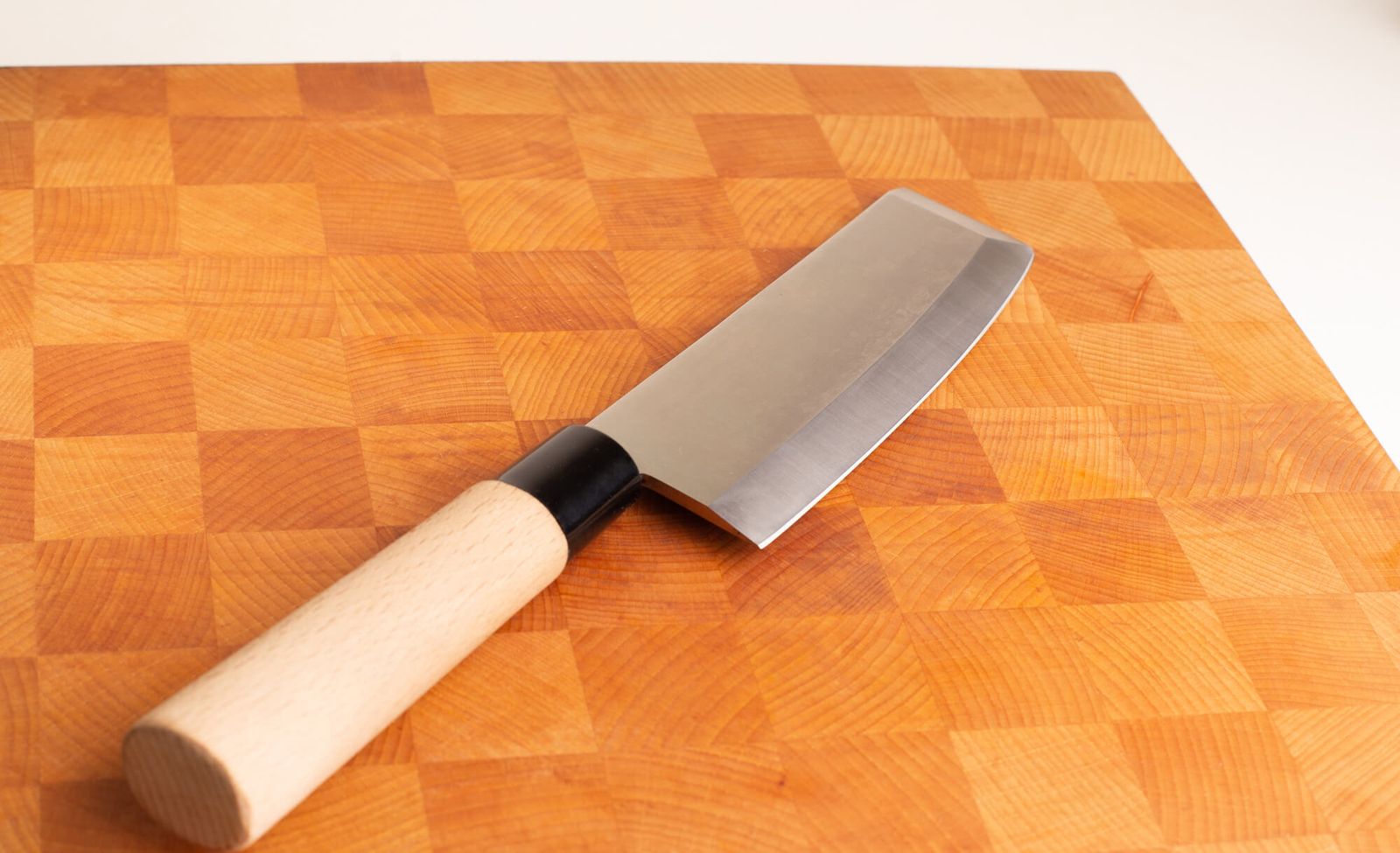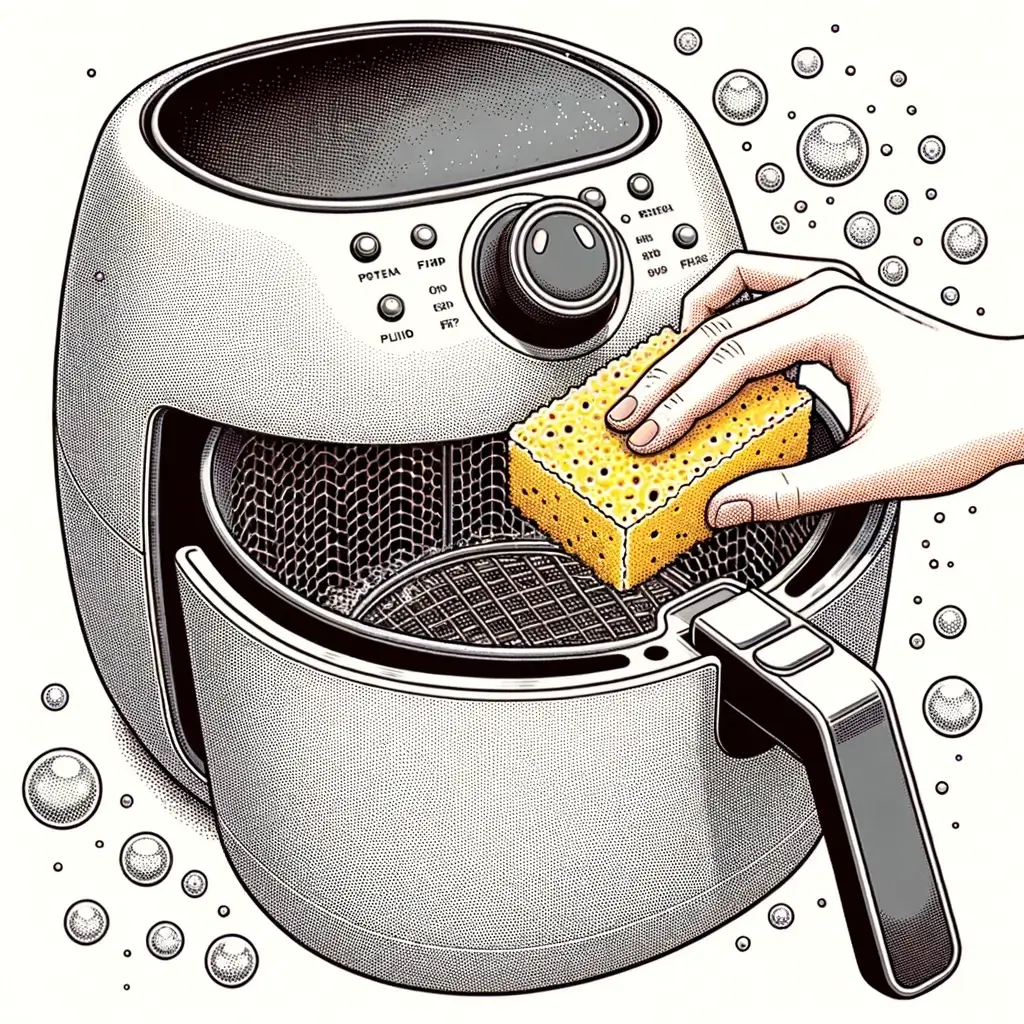The Nakiri knife is a beloved kitchen tool hailing from Japan, renowned for its precision and effectiveness in vegetable preparation.
In this post, we will delve into the different parts and functions of the Nakiri knife, providing a comprehensive understanding of its anatomy and how each component contributes to its performance.
In This Article
Blade Design and Shape
Blade Material and Construction
Spine and Tang
Handle Materials and Construction
Bolster and Finger Guard
Edge and Bevels
Bolster and Finger Guard
Blade Length and Weight
Function of the Nakiri Knife
Blade Design and Shape
At the heart of the Nakiri knife's design is its unique blade shape. It features a rectangular profile with a straight edge, setting it apart from other traditional Japanese knives.
This blade design offers distinct advantages for vegetable preparation. The straight edge allows for precise, clean cuts, facilitating uniform slices and accurate dicing. The broad, flat blade surface enhances stability and provides ample surface area for scooping and transferring ingredients.
Blade Material and Construction
The choice of steel for Nakiri knife blades significantly influences their performance and durability. Commonly used steels include high-carbon stainless steel, VG-10, and AUS-10. Each steel type possesses its own set of properties, such as edge retention, toughness, and corrosion resistance.
The blade hardness, measured on the Rockwell scale, affects how well the knife holds its edge. Furthermore, the construction methods of Nakiri knife blades, such as forging and stamping, contribute to their overall quality and characteristics.
Spine and Tang
The spine of the Nakiri knife refers to the top edge of the blade. Its thickness plays a crucial role in the knife's balance and cutting performance. A thicker spine provides stability and support, allowing for controlled chopping and reducing the risk of food sticking to the blade.
Conversely, a thinner spine allows for greater precision during intricate tasks. In terms of construction, a full tang design, where the blade extends through the handle, ensures durability and optimal balance, enhancing the overall handling experience.
Handle Materials and Construction
The handle of a Nakiri knife is an essential component that greatly affects the overall usability and comfort during prolonged use. Nakiri knives often feature handles made from various materials, including wood, composite materials, or plastic.
Wooden handles, such as those crafted from hardwoods like rosewood or ebony, provide a traditional and natural aesthetic. Composite materials, such as G-10 or Micarta, offer enhanced durability and resistance to moisture. Plastic handles, such as polypropylene, are lightweight and easy to clean.
Handle ergonomics and comfort are crucial considerations when selecting a Nakiri knife. A well-designed handle should offer a secure grip, allowing for precise control and minimizing hand fatigue. The handle's shape and contours should conform comfortably to the hand, promoting a balanced and comfortable cutting experience.
Different handle construction techniques are employed in Nakiri knife production. Riveted handles involve attaching the handle scales to the tang using rivets, providing stability and strength.
Integral handles are created by carving the handle from the same piece of material as the blade, resulting in a seamless and durable design.
Hidden tang handles feature the tang of the blade inserted into the handle and concealed by the handle material, delivering a sleek and ergonomic profile.
Bolster and Finger Guard
The bolster in a Nakiri knife is a thick, metal section located between the blade and handle. It serves multiple purposes, including enhancing balance, stability, and safety.
The bolster contributes to the knife's overall weight distribution, ensuring a comfortable and controlled cutting experience. Additionally, it adds strength and durability to the knife by reinforcing the junction between the blade and handle.
In terms of finger guards, Nakiri knives typically do not feature a prominent finger guard like some other knife styles. Instead, the bolster often acts as a subtle finger stop, preventing the hand from sliding forward onto the blade during use. This design allows for more precise control and maneuverability when executing delicate vegetable cuts.
Edge and Bevels
The edge geometry of a Nakiri knife plays a vital role in its cutting performance. The Nakiri knife typically features a double beveled edge, known as a "double bevel" or "V" edge. This means both sides of the blade taper down to form the cutting edge, allowing for versatile use by both right-handed and left-handed individuals.
The sharpness of the Nakiri knife's edge is a result of precise grinding and honing. The blade is sharpened to a fine edge, ensuring clean and effortless cuts through vegetables.
The bevels, or angles at which the edge is ground, can vary depending on the manufacturer and the knife's intended purpose. However, most Nakiri knives feature a bevel angle ranging from 15 to 20 degrees on each side, striking a balance between sharpness and durability.
Blade Length and Weight
The optimal blade length for Nakiri knives typically ranges between 6 to 7 inches (15 to 18 cm). This length provides a good balance between maneuverability and efficiency when slicing, dicing, and chopping vegetables.
A slightly shorter blade allows for greater control and precision, while a longer blade offers increased cutting surface area and efficiency for larger ingredients.
Blade weight is another crucial factor to consider when selecting a Nakiri knife. The weight of the blade influences cutting efficiency and user comfort. A well-balanced Nakiri knife should have a blade that feels substantial enough to glide through vegetables effortlessly without putting excessive strain on the user's wrist or hand.
A balanced weight distribution ensures a comfortable and controlled cutting experience, reducing the risk of fatigue during extended use.
Function of the Nakiri Knife
The Nakiri knife is specifically designed for vegetable preparation and excels in tasks such as slicing, dicing, and chopping vegetables with precision and ease.
Its flat blade profile allows for full contact with the cutting board, promoting efficient chopping motions.
The straight edge facilitates clean and precise cuts, making it ideal for creating uniform vegetable slices and achieving consistent dices.
The Nakiri knife's broad, rectangular shape provides ample surface area for scooping and transferring ingredients, streamlining the cooking process.
For a more in-depth exploration of techniques for efficient vegetable chopping, we invite you to delve into our micro-guide.
In conclusion, the Nakiri knife is a cherished Japanese culinary gem renowned for its precise vegetable preparation. With its unique design, quality materials, and balanced construction, it excels in slicing, dicing, and chopping vegetables with ease.
Whether in the hands of a professional chef or a passionate home cook, the Nakiri knife enhances culinary experiences, showcasing the artistry and craftsmanship behind Japanese kitchen tools.
For those considering purchasing a Nakiri knife, we invite you to explore our article featuring the top 5 recommended options.



